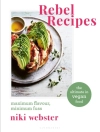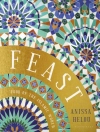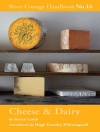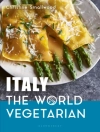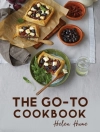Take a breath…. Read slowly.
How often in the course and crush of our daily lives do we afford ourselves moments to truly relish-to truly be present in-the act of preparing and eating food? For most of us, our enjoyment of food has fallen victim to the frenetic pace of our lives and to our increasing estrangement, in a complex commercial economy, from the natural processes by which food is grown and produced. Packaged, artificial, and unhealthful, fast food is only the most dramatic example of the degradation of food in our lives, and of the deeper threats to our cultural, political, and environmental well-being.
In 1986, Carlo Petrini decided to resist the steady march of fast food and all that it represents when he organized a protest against the building of a Mc Donald’s near the Spanish Steps in Rome. Armed with bowls of penne, Petrini and his supporters spawned a phenomenon. Three years later Petrini founded the International Slow Food Movement, renouncing not only fast food but also the overall pace of the ‘fast life.’ Issuing a manifesto, the Movement called for the safeguarding of local economies, the preservation of indigenous gastronomic traditions, and the creation of a new kind of ecologically aware consumerism committed to sustainability. On a practical level, it advocates a return to traditional recipes, locally grown foods and wines, and eating as a social event. Today, with a magazine, Web site, and over 75, 000 followers organized into local ‘convivia, ‘ or chapters, Slow Food is poised to revolutionize the way Americans shop for groceries, prepare and consume their meals, and think about food.
Slow Food not only recalls the origins, first steps, and international expansion of the movement from the perspective of its founder, it is also a powerful expression of the organization’s goal of engendering social reform through the transformation of our attitudes about food and eating. As Newsweek described it, the Slow Food movement has now become the basis for an alternative to the American rat race, the inspiration for ‘a kinder and gentler capitalism.’
Linger a while then, with the story of what Alice Waters in her Foreword calls ‘this Delicious Revolution, ‘ and rediscover the pleasures of the good life.
Содержание
The Slow Food Manifesto
Part 1: Appetite and Thought
The Origins
From ‘New Epicures» to Ecological Gastronomes
An International Movement of Good Taste
Pleasure Denied, Pleasure Rediscovered
Mc Donald’s Versus Slow Food
Part 2: In the Beginning, the Territory
Cultivating Diversity
At the Center, the Producer
The Rebirth of the Osteria
The Difficult Voyage
The Salone del Gusto
Part 3. Educating and Learning
The Praise of the Senses and the Paradox of Taste
In the Schools
From the Workshops to the Master of Food
The University
Part 4: The Noah Principle
Scenes from a Flood
The Ark and the Presidia
Quality, the Law, and Biotech
The Slow Food Award for the Defense of Biodiversity
Without Nostalgia: Acknowledgments
Part 5: Appendices
The Slow Food Italian Presidia
The Slow Food International Presidia
Slow Food Award Winners
A Chronology of Arcigola Slow Food
Об авторе
Carlo Petrini is a food writer and the founder and president of the International Slow Food Movement. He lives in Bra, Italy. William Mc Cuaig is a translator living in Toronto. Alice Waters is executive chef and owner of Chez Panisse restaurant in Berkeley, CA.


